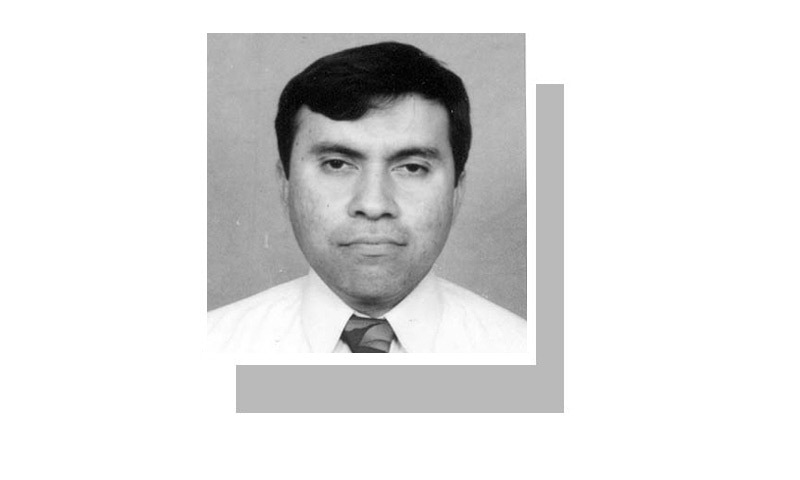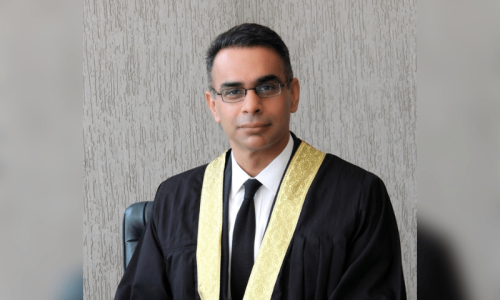
TODAY marks the 200th birth anniversary of Sir Syed Ahmed Khan. His invaluable contributions towards the Muslim renaissance in the subcontinent are well acknowledged — particularly his founding of Aligarh Muslim University, which trained generations of youth from the late 19th century onwards. The university’s students are seen as having played a major role in propagating the All-India Muslim League’s core message throughout the subcontinent. This voluntary electioneering campaign turned the voters’ opinion in favour of the Pakistan scheme.
But Sir Syed was also a gifted scholar and researcher, and his canvas was broad. From questions in natural sciences to comparative studies in religion, Sir Syed explored many topics and left invaluable treatises for posterity. Asar-us-Sanadid is a seminal work on the social and cultural life of Delhi, with a focus on its heritage monuments. Based on exhaustive original research, the book outlines the rich flavours of the high civilisation that Delhi was able to exemplify, drawing upon the concept and meaning of architecture in the formative years of Muslim civilisation.
The debate around ‘Islamic’ and ‘Muslim’ architecture has been scientifically dwelt on by Sir Syed. He categorically established that ‘Islamic architecture’ refers to the bare bones of the built structures, absolutely devoid of frills and embellishments. The public and private edifices were designed and executed in basic forms and finishes. However, the spread of the faith, the conquests of caliphs and sultans, as well as expanding trade linkages exposed Muslims to diverse cultural influences. Their passion for architecture was informed by their admiration of the architectural marvels they encountered within their territories.
Sir Syed’s talents included a gift for research.
Sir Syed also provided a synopsis of the architectural characteristics of major periods — Umayyad, Moorish, Fatimid, Mamluk, Ottoman and Persian — and a chronological account of the subcontinent’s various dynasties and their contributions to art and architecture. He drew analytic comparisons in the various rulers’ inclinations and achievements, arriving at logical conclusions about the preconditions that led to architectural divergence in succeeding times.
Thus, Qutub Minar and Masjid Quwwat-ul-Islam by Sultan Qutbuddin Aibak and his successors reflect many hybrid elements from pre-existing Hindu building complexes. He concluded that the grand scale of the minar actually shows the dominance that Muslim conquerors had attained after scores of hard-fought battles. Sher Shah Suri, during his brief stint on the throne, took extraordinary initiatives regarding public works, infrastructure and communication systems; the sketches, charts, maps and plans of which Sir Syed included in the book.
Architects, archaeologists and the general readership may also find valuable information about the construction techniques, decorative works and landscaping preferences in different periods.
Sir Syed delved deep to unearth the enticing secrets of Delhi’s buildings. Gateways to the forts; verdures and informal gardens; palatial residences; baths; tombs; canals and canal banks; minarets and even window openings have been described with flowing diction, factual references and visual representations. He sifted carefully through all available drawings; wherever references were found lacking, he commissioned artists and draughtsmen to create them.
He applied the same effort to scripts and the calligraphic excellence found along various facades and interiors. Wherever Sanskrit, Hindi and other languages are documented, Sir Syed provided translations for the reproductions of the original inscriptions.
The information gathered in this exhaustive tome came from multifarious sources. In-depth reviews of literary texts were followed up with fieldwork. In Hayat-i-Javed, Altaf Hussain Hali wrote that Sir Syed developed a special hanging trolley and pulley set, taking undue risks in scaling minarets and parapets, so that he could read inscriptions high up on buildings and structures. Structured and unstructured interviews, populist anecdotes, folk references, and interviews with prominent scholars and administrators were also meticulously documented. Where relevant, Sir Syed included the actual transcripts of such valuable original accounts.
The cultural life of the Delhi of yesteryears resonates throughout Asar-us-Sanadid. Sir Syed discussed, in detail, people of importance and their backgrounds. Using a scientific classification method clad in an attractive writing pattern, he portrays the characters that filled that wonderful city with life. Sufi saints have been described with reference to their saintly orders, linkages, lineages and socio-cultural influences. Religious scholars, aaris, huffaz, hakeems, poets, calligraphers, artists, painters, musicians and elites of all sorts, as well as artisans and common folk, are all included in the treatise. Sir Syed is well known for the merits of his multifaceted personality; to this, we must credit him with being a seasoned researcher who made invaluable contributions to cultural studies.
The writer is chairman, Department of Architecture & Planning, NED University, Karachi.
Published in Dawn, October 17th, 2017











































